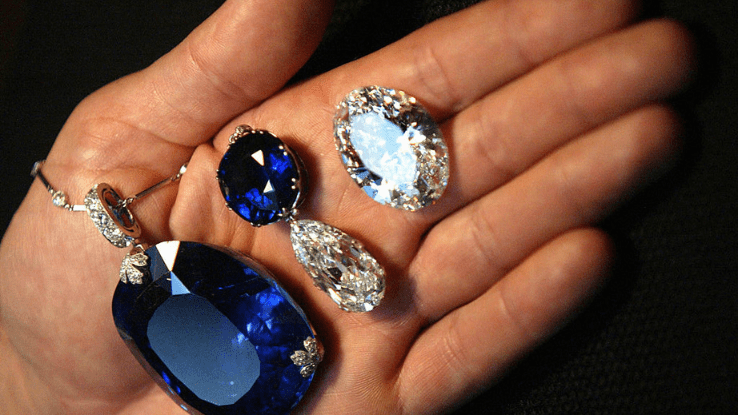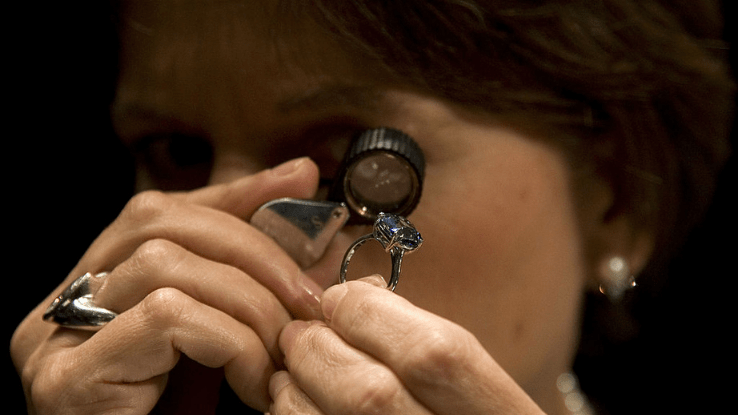The Diamond Clarity Scale: A Beginner’s Guide to Gem Quality

Have you ever wondered where #flawless originated? Whether you’re assessing a family heirloom or shopping for jewels that just cooled off from the lab, gemstones have rating scales that determine their monetary value. The diamond clarity guide is one, and it helps retailers appraise diamonds.
Diamond clarity, in short, describes the way light passes through a stone due to the number of internal defects it has. Clearer diamonds are worth more; they may even have more of a sparkle in the right lighting. Blemishes, abrasions or “inclusions” are the types of defects that make a diamond less clear and less valuable. An inclusion is a solid, liquid or gas that gets trapped in the diamond while it forms.
The diamond clarity guide was created by the Gemological Institute of America (GIA). This nonprofit was founded by Robert M. Shipley in 1931 and remains one of the most trusted organizations regarding all things diamonds and gemstones at large. Its mission is to “ensure the public trust in gems and jewelry by upholding the highest standards of integrity, academics, science and professionalism through education, research, laboratory services and instrument development.”
With labs and research facilities all over the world, the GIA’s color ratings and diamond clarity scales are some of the most respected in the industry. A magnifying glass is not required, but let’s take a deeper look at diamond clarity and how it impacts diamond pricing.
Understanding the Diamond Clarity Scale

Of all the factors that affect the price of a diamond, clarity might be the most prominent. Diamonds are like snowflakes — you won’t see any that are identical. Diamonds are usually mined and sometimes grown in labs. Even if cut in the exact same manner, two diamonds could be completely different due to the stones having physical compositions that aren’t the same.
The first scale for rating diamonds came from a chart developed by Richard T. Liddicoat, along with fellow gemologists Marquis Person, Joe Phillips, Robert Crowningshield and Bert Krashes, in 1952. A few tweaks have been made to the diamond clarity guide since, but for the most part, their original clarity chart remains intact today. “Flawless” and “Internally Flawless” are the highest grades in this clarity scale.
Flawless (F)
Flawless diamonds are the priciest and most valuable. These have no blemishes or inclusions, even under 10x magnification. Flawless-graded diamonds are the rarest type; almost all diamonds have natural inclusions.
Internally Flawless (IF)
So close, but not quite. IF diamonds won’t show any inclusions in the magnifying glass, but there can be visual signifiers on their surfaces. These are still high-quality diamonds, but they might not be as brilliant. Both F and IF-rated diamonds have zero divisions in their respective categories, unlike inclusive-related diamonds.
The Diamond Clarity Guide Continued: The Inclusivity Scale

The other half of the diamond clarity scale used to be considered “imperfect.” Today, the term “inclusion” is used. This means that the diamond may not be as appealing under a magnifying glass or to the naked eye as other diamonds.
Very, Very Slightly Included (VVS)
VVS diamonds have abrasions that can be tough to find, even if magnified 10x. There are two classes of VVS diamonds. VVS1 diamonds have a slightly higher quality than VVS2 diamonds. VVS2 inclusions are also easier to see under magnification.
Very Slightly Included (VS)
VS diamonds have internal inclusions that are more visible than those of VVS diamonds. Like VVS diamonds, VS diamonds are divided into two classes. VS1 diamonds have visible inclusions under 10x magnification, but the inclusions in VS2 diamonds may be visible to the naked eye.
Slightly Included (SI)
SI diamonds have inclusions that a gem expert could spot easily. Casual diamond fans may not be able to tell if these diamonds are flawless or not. Like the previous diamond clarity categories, SI1 diamonds are higher quality than SI2 diamonds.
Included (I)
These diamonds have the lowest clarity score. Their inclusions are visible to gem raters, and these inclusions could affect the diamond’s overall durability. For something like an engagement ring that’s supposed to last forever, I-level diamonds won’t be the first choice for many.
Other Ways to Determine a Diamond’s Value

Understanding diamond clarity is important, but what are some other factors that affect a diamond’s quality and, most importantly, their price? GIA uses what are called “the 4 Cs” to simplify the elements of quality people use to grade diamonds.
Aside from “clarity,” carat, color and cut also affect a diamond’s quality and price. The carat of a diamond has to do with the stone’s weight. A cut of a diamond describes how the stone is shaped; think of an engagement ring vs. an earring or the stones you see in a necklace — they’re all a little different. A diamond’s color also affects its price. Different colors have different ratings, but red diamonds are generally the most expensive.
No matter your price range, it’s good to know your diamonds before buying one. Knowing the clarity scale for diamonds is a great start to getting informed on how diamonds work in the market today.





